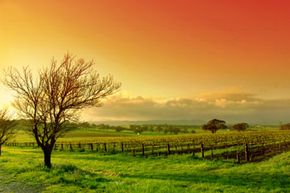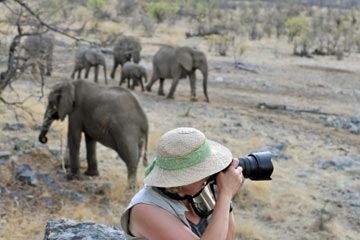A stunning sunrise. Majestic mountains. Rushing rivers. Nature can be awe-inspiring, and photography is an excellent medium through which to capture the beauty of a landscape. Landscape photography can be a way to see the world in all its glory and show art through life. But finding that perfect frame isn't restricted to the likes of professional photographers such as Ansel Adams. With the proper equipment and techniques, you can take great landscape photos, too.
By definition, landscape photography is just that: pictures of nature or landscapes. Very rarely does a landscape photograph have people in it. When it does, the person is there to show scale -- how large or small an object is. Landscape photography comes in a variety of styles, which we'll take a look at below [source: PhotographyTips.com].
Advertisement
Representational photography can be thought of as, "What you see is what you get." In this style of landscape photography, the photographer doesn't do anything to alter the scene but captures the essence of nature. Composition of the photograph, light, timing, and weather are all important aspects when using this style.
Much like an impressionistic painting, landscape photographs can employ impressionistic techniques, and use of soft filters can give photos illusive effects. Although the viewer can still make out what the subject of the photo is, the actual picture itself might not be sharp or clear.
Abstract landscape photography uses a variety of techniques, namely shape and proximity to shoot aspects of nature, but not necessarily an entire landscape. The resulting photographs may play with patterns, shapes and close-ups.
Landscape photography doesn't always have to be nature photography. Urban landscapes full of skyscrapers can also make for stunning pictures. Lines, angles, shapes and tall buildings give landscape photographers a lot of options to play with.
Up next, we'll look at the type of equipment you'll need for landscape photography.
Advertisement


